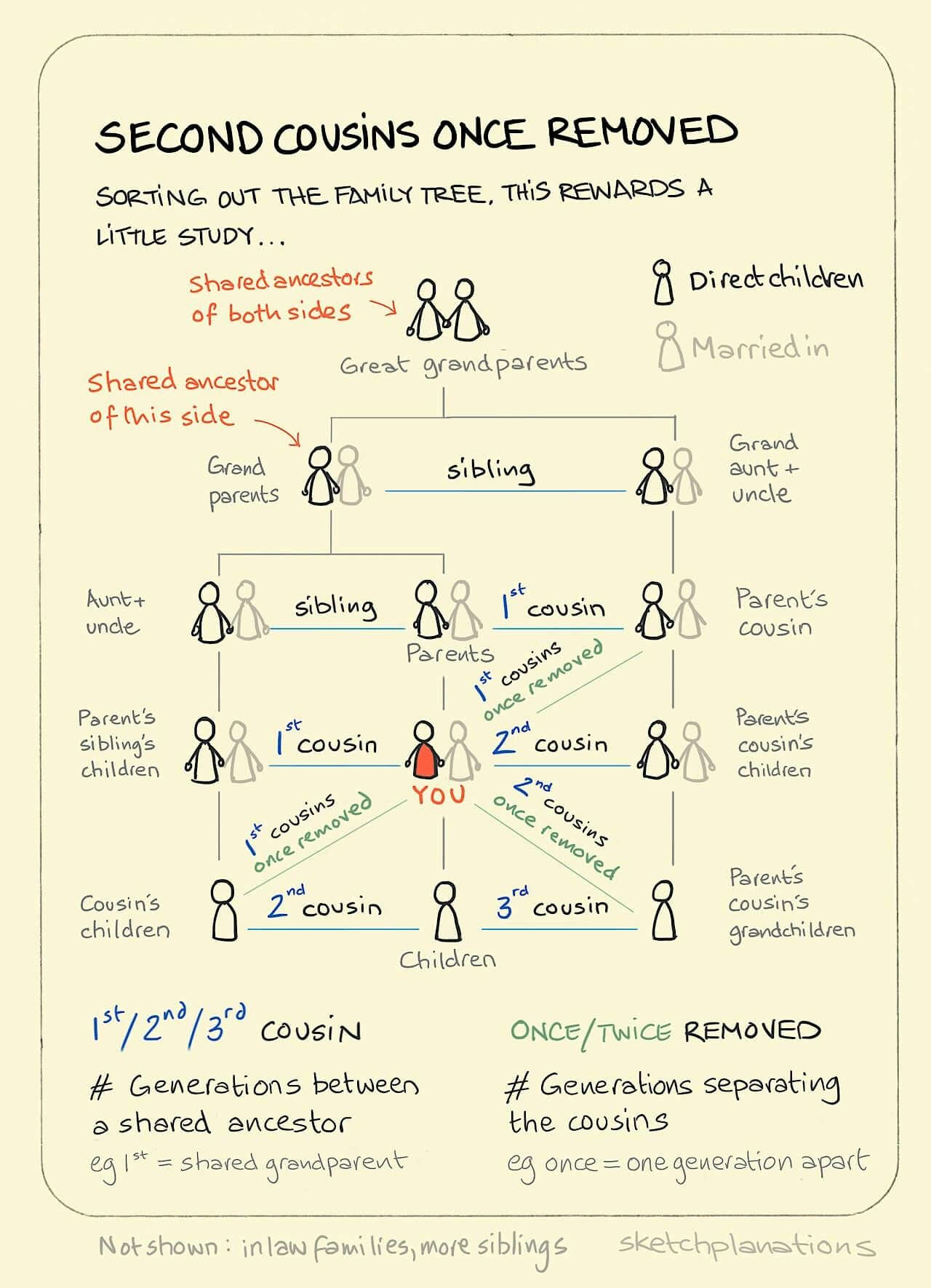Second cousins once removed.

Even when you’ve figured out how family relations work, families, in just a few generations, can get surprisingly complex. I won’t pretend this one doesn’t require a little study.
What is a first, second or third cousin? And what does once or twice removed have to do with anything? One way to think about it is that the first, second or third cousins, have to do with the number of generations you are away from a shared ancestor. So, who you would probably normally call your cousins — your parents brothers or sisters, children — have one generation, your parents generation, before reaching grandparents that are shared by both. If you have children, and your first cousins have children, they will be second cousins to eachother as it’s now two generations to a shared ancestor — their great grandparents in this case.
While first, second, or third cousins of eachother are of the same generation, when you are once removed it means you are cousins one generation apart. So, you would be first cousins once removed with your cousin’s children. If you look at the sketch, you’ll actually see that you are second cousins once removed with your parent’s cousin’s grandchildren. Simple ¯_(ツ)_/¯
The sketch gets pretty complicated to see this, and that’s without even showing having more than one sibling, any of the in-law families, or considering divorces, remarries, half-brothers, step mothers and the like. Crikey.
You’re welcome to use and share this image and text for non-commercial purposes with attribution. Go wild!
See licence

